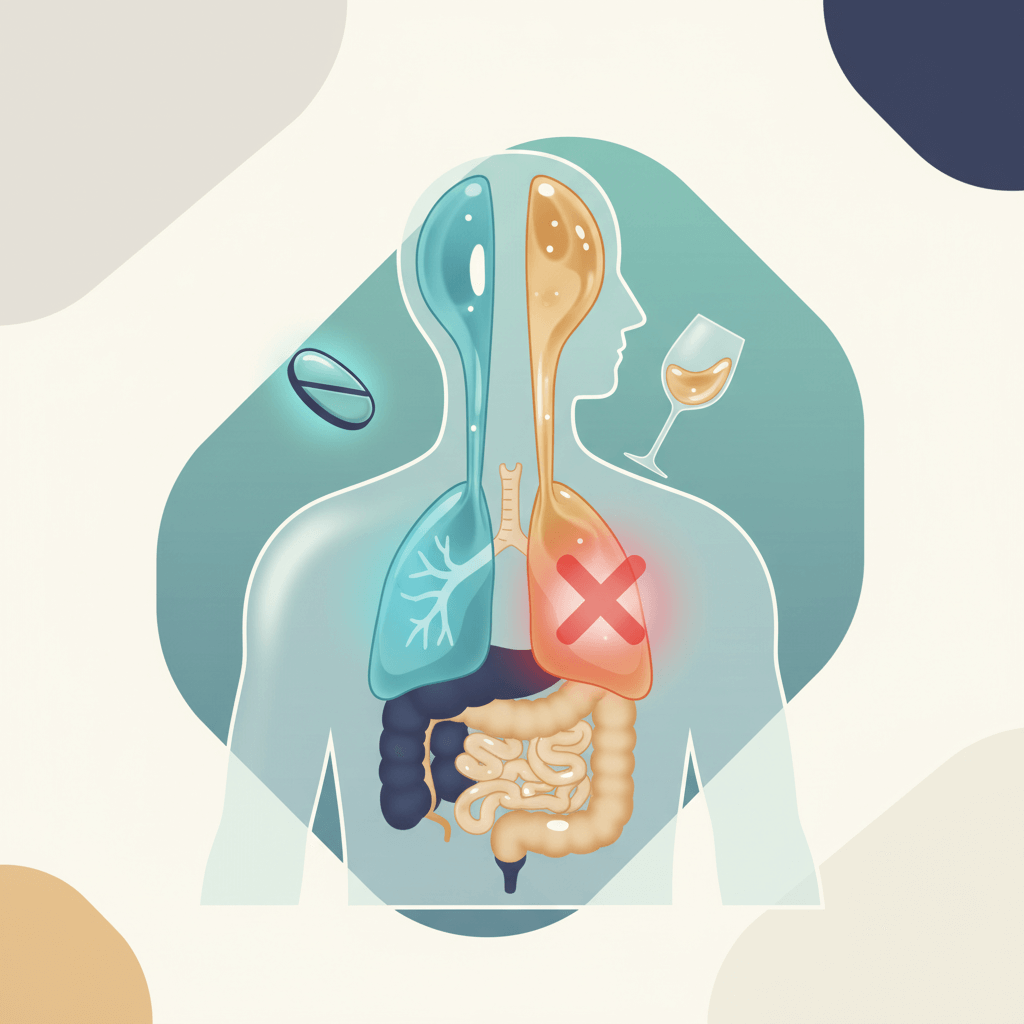Understanding Psychotherapy
Psychotherapy is a form of treatment that focuses on helping individuals navigate and overcome emotional and psychological challenges. It involves a collaborative relationship between a trained therapist and a client, with the goal of improving mental well-being and promoting personal growth.

What is Psychotherapy?
Psychotherapy, also known as talk therapy or counseling, encompasses a range of therapeutic approaches aimed at addressing various mental health concerns. It provides a safe and supportive environment for individuals to explore their thoughts, feelings, and behaviors, and work towards developing healthier coping mechanisms.
The specific techniques and methods employed in psychotherapy can vary depending on the therapeutic approach and the needs of the individual. Some of the common goals of psychotherapy include:
- Gaining insight into one's emotions and behaviors
- Identifying and challenging negative thought patterns
- Developing effective coping strategies
- Enhancing communication and interpersonal skills
- Promoting self-acceptance and self-esteem
The Importance of Psychotherapy
Psychotherapy plays a significant role in promoting mental health and well-being. It offers a range of benefits for individuals facing emotional and psychological challenges. Some of the key advantages of psychotherapy include:
- Symptom Reduction: Psychotherapy has been extensively researched and proven to be effective in alleviating symptoms associated with various mental health conditions, such as stress, depression, addiction, and anxiety disorders. Different therapeutic approaches may be more suitable for specific conditions.
- Improved Coping Skills: Through psychotherapy, individuals can develop healthier coping mechanisms to deal with stress, trauma, and life challenges. Therapists provide guidance and support in learning effective strategies to manage emotions, solve problems, and navigate relationships.
- Increased Self-Awareness: Psychotherapy offers a space for self-reflection and exploration, allowing individuals to gain a deeper understanding of their thoughts, emotions, and behaviors. This self-awareness can lead to personal growth, improved self-esteem, and a more fulfilling life.
- Enhanced Relationships: Therapy can help individuals improve their interpersonal skills and develop healthier relationships. By addressing underlying issues, improving communication, and fostering empathy, individuals can build stronger connections with others.
- Emotional Support: The therapeutic relationship itself provides a valuable source of emotional support. Having a non-judgmental and empathetic professional to confide in can offer comfort, validation, and guidance during challenging times.
It's important to note that the duration and frequency of psychotherapy can vary depending on the individual's needs and the therapeutic approach used. Cognitive Behavioral Therapy (CBT), for example, is a time-limited therapy lasting from 5 to 15 sessions, while Psychodynamic Therapy is typically a once or twice a week treatment lasting from months to a few years. The choice of therapy depends on the individual's specific concerns and goals.
Overall, psychotherapy provides a valuable avenue for individuals to seek support, gain insight, and work towards positive change. Whether addressing specific mental health conditions or simply seeking personal growth, psychotherapy can be a beneficial and transformative experience.
Types of Psychotherapy
Psychotherapy encompasses various approaches that aim to address psychological and emotional challenges. Each type of psychotherapy has its own unique principles and techniques. Let's explore some of the common types of psychotherapy:
Cognitive Behavioral Therapy (CBT)
Cognitive Behavioral Therapy (CBT) is a widely utilized form of psychotherapy that focuses on the client's symptoms, triggers, and thoughts immediately before and after a behavior [1]. CBT is known for its structured and goal-oriented approach, aiming for symptom reduction through activities such as data gathering, goal setting, and thought challenging.
CBT is extensively researched and has shown efficacy in treating various conditions including stress, depression, addiction, and anxiety disorders. It typically involves a time-limited treatment lasting from 5 to 15 sessions.
Psychodynamic Therapy
Psychodynamic Therapy is an insight-driven approach that emphasizes unconscious processes, early childhood experiences, and the therapeutic relationship between the client and therapist. It is often used to treat conditions such as persistent emotional struggles, chronic depression, unsatisfying relationships, and childhood trauma.
Compared to CBT, Psychodynamic Therapy is typically a longer-term treatment, lasting from months to a few years. The therapeutic process involves exploring emotional depths and understanding the client's early history and unconscious processes to bring about sustainable change.
Exposure Therapy
Exposure Therapy is a type of psychotherapy commonly used to treat anxiety disorders, phobias, and post-traumatic stress disorder (PTSD). It involves gradually exposing individuals to the feared or traumatic stimuli in a safe and controlled environment.
The goal of Exposure Therapy is to reduce anxiety and fear responses by helping individuals confront and process their fears. Different approaches within Exposure Therapy may include systematic desensitization, virtual reality exposure, and imaginal exposure.
Humanistic Therapy
Humanistic Therapy focuses on the individual's subjective experience, emphasizing self-awareness, personal growth, and self-acceptance. It aims to foster a supportive and empathetic therapeutic relationship in which clients can explore their feelings, values, and goals.
One prominent approach within Humanistic Therapy is Client-Centered Therapy, developed by Carl Rogers. This approach emphasizes the importance of genuineness, unconditional positive regard, and empathetic understanding from the therapist. Mindfulness techniques may also be incorporated to enhance self-awareness and acceptance.
Substance-related Treatment
Substance-related Treatment refers to psychotherapy approaches specifically tailored to address substance-related disorders. These therapies may involve individual counseling, group therapy, or a combination of both.
The focus of substance-related treatment is on addressing the underlying factors contributing to addiction, developing coping strategies, and promoting long-term recovery. Group therapy, in particular, plays a crucial role in providing support, fostering a sense of community, and addressing common challenges.
Dialectical Behavior Therapy (DBT)
Dialectical Behavior Therapy (DBT) is a type of psychotherapy originally developed for individuals with borderline personality disorder. It combines elements of cognitive-behavioral techniques with mindfulness and acceptance-based strategies.
DBT aims to help individuals regulate their emotions, manage distress, improve interpersonal relationships, and develop coping skills. It typically involves a structured treatment plan with different stages, including individual therapy, group skills training, phone coaching, and therapist consultation teams.
Understanding the different types of psychotherapy can help individuals make informed decisions about which approach may be most beneficial for their specific needs. Collaborating with a qualified therapist is essential in determining the most appropriate type of therapy and developing a personalized treatment plan.
Cognitive Behavioral Therapy (CBT)
Cognitive Behavioral Therapy (CBT) is a widely used and effective form of psychotherapy that focuses on the connection between thoughts, behaviors, and emotions. It is known for its structured and goal-oriented approach to help individuals address a range of mental health conditions, such as stress, depression, addiction, and anxiety disorders [1].
Overview of CBT
In CBT, the therapist and client work collaboratively to identify and challenge negative thought patterns and beliefs that contribute to emotional distress or problematic behaviors. The goal is to replace these maladaptive thoughts with more realistic and helpful ones. CBT sessions are typically time-limited, lasting from 5 to 15 sessions depending on the individual's needs and the specific treatment goals.
CBT sessions are structured and follow a specific agenda. The therapist and client engage in various activities, including data gathering, goal setting, and thought challenging. The therapist helps the client understand the relationship between their thoughts, emotions, and behaviors. By gaining insight into these connections, clients can develop healthier coping strategies and achieve symptom reduction [1].
Techniques and Approaches in CBT
CBT employs a range of techniques and approaches to help individuals overcome their challenges. Some commonly used techniques include:
- Cognitive Restructuring: This technique involves identifying and challenging negative or irrational thoughts. By replacing them with more realistic and balanced thoughts, individuals can change their emotional responses and behaviors.
- Behavioral Activation: This technique focuses on increasing engagement in positive and rewarding activities to counteract feelings of depression or low motivation. By participating in enjoyable activities, individuals can improve their mood and overall well-being.
- Exposure Therapy: Exposure therapy is often used to treat anxiety disorders. It involves gradually exposing individuals to feared situations or objects in a safe and controlled manner. Through repeated exposure, individuals can learn to reduce their anxiety and develop healthier responses.
- Skills Training: CBT often includes teaching individuals practical skills to manage their emotions and cope with stress more effectively. These skills may include relaxation techniques, problem-solving strategies, and assertiveness training.
CBT is a highly structured and goal-oriented therapy. It focuses on the present and works towards symptom reduction by providing individuals with practical skills and solutions to address their current problems. Homework assignments or "action plans" may be given to clients to practice and reinforce the skills learned during therapy sessions [2].
It's important to note that CBT may not be suitable for everyone or every condition. Therapy is a highly individualized process, and some individuals may benefit from other approaches or a combination of therapies. Consulting with a qualified therapist can help determine the most appropriate treatment approach for each individual's unique needs.
Psychodynamic Therapy
Psychodynamic therapy is a therapeutic approach that aims to help individuals gain insight into how early life experiences influence their present-day thoughts, feelings, and behaviors. It explores the unconscious processes and the therapeutic relationship between the client and therapist. This form of therapy is often used to address persistent emotional struggles, chronic depression, treatment-resistant anxiety, unsatisfying relationships, childhood trauma, prolonged grief, narcissistic personality disorder (NPD), and psychosomatic conditions.
Exploring Psychodynamic Therapy
Psychodynamic therapy focuses on delving into deep-rooted aspects of the self, such as relationship patterns, personality facets, and stages of emotional development. It emphasizes the therapeutic relationship between the client and therapist, providing a safe and supportive space for exploration and growth. Through open dialogue and reflection, clients gain a better understanding of their unconscious thoughts and feelings, allowing for a deeper emotional insight.
The role of introspection in psychodynamic therapy is different from other therapeutic approaches like cognitive-behavioral therapy (CBT). In CBT, introspection is often guided by the therapist through questioning, while in psychodynamic therapy, introspection occurs more naturally in the dialogue between the client and therapist or through implicit communication. This approach allows for a more profound exploration of unconscious processes and early life experiences, leading to insight and personal growth.
Uncovering Unconscious Processes
Psychodynamic therapy aims to uncover and explore unconscious processes that may influence an individual's thoughts, emotions, and behaviors. By examining early life experiences, such as relationships with parents, attachment styles, and interpersonal struggles, clients gain a better understanding of how these experiences shape their current lives. This insight can empower individuals to make positive changes and develop healthier coping mechanisms.
The therapeutic relationship in psychodynamic therapy plays a significant role in the healing process. The client and therapist work collaboratively to create a safe and non-judgmental space for self-exploration. Through the development of a strong therapeutic alliance, clients can express their deepest thoughts and emotions, fostering growth and self-empowerment.
Psychodynamic therapy offers a unique approach to therapy by focusing on the unconscious processes, early life experiences, and the therapeutic relationship. By exploring these aspects, individuals can gain valuable insights into themselves, their relationships, and their emotional well-being.
Exposure Therapy
Exposure therapy is a powerful form of psychotherapy that has proven to be beneficial for various mental health conditions, including phobias, post-traumatic stress disorder (PTSD), panic disorder, obsessive-compulsive disorder (OCD), and certain eating disorders [3]. This therapeutic approach involves gradually facing and confronting the fears or triggers associated with these conditions, ultimately reducing their impact on daily life.
The Power of Exposure Therapy
Exposure therapy has shown remarkable effectiveness, particularly in treating specific phobias. Studies indicate that over 90% of individuals with specific phobias who commit to and complete exposure therapy experience significant relief from their fears. By gradually exposing individuals to the feared stimuli, whether it's heights, spiders, or flying, exposure therapy helps them develop new coping mechanisms and reduces the anxiety response associated with their phobias.
Exposure therapy can take different forms, depending on the condition being treated. Three common approaches include:
- In Vivo Exposure: This type of exposure therapy involves facing fears in a real-life setting. For example, someone with a fear of heights may gradually work with their therapist to climb higher and higher over multiple sessions. The goal is to desensitize the individual to the feared situation and help them build confidence.
- Imaginal Exposure: Imaginal exposure therapy involves facing fears through imagination. It is particularly useful for individuals with traumatic memories or intrusive thoughts. By revisiting and recounting the traumatic event or distressing thoughts in a safe environment, individuals can process and reduce the emotional distress associated with the memories.
- Virtual Reality Exposure: Virtual reality (VR) exposure therapy utilizes advanced technology to create simulated environments that replicate real-life situations. This approach is especially beneficial for individuals with phobias or PTSD who may have difficulty accessing or recreating the feared situation. VR exposure therapy allows individuals to experience a controlled and safe version of the situation, helping them confront their fears.
Different Approaches in Exposure Therapy
Exposure therapy can vary in length depending on individual needs and progress. Some individuals may require only a few sessions, while others may need more, depending on their tolerance and response to treatment. The important factor is seeking help and committing to the therapy process. Any progress made, no matter how small, is considered a positive step forward [3].
Throughout the process, it's essential to work closely with a mental health professional who specializes in exposure therapy. They will guide and support you during each session, ensuring your safety and providing tools to manage any discomfort that may arise. While exposure therapy may induce temporary discomfort or anxiety, experiencing severe fear or panic should be communicated to your therapist for appropriate guidance and support.
Exposure therapy is a safe and effective treatment option for various mental health conditions. By systematically confronting fears and triggers, individuals can regain control over their lives and reduce the impact of anxiety-provoking situations. If you're struggling with a specific phobia, PTSD, panic disorder, OCD, or an eating disorder, exposure therapy may be a valuable treatment to consider. Reach out to a qualified mental health professional to discuss whether exposure therapy is suitable for your needs.
Humanistic Therapy
Humanistic therapy, developed by psychologist Carl Rogers, is a form of psychotherapy that emphasizes the importance of self-awareness, self-acceptance, and personal growth. It focuses on the patient's present and future experiences, aiming to help individuals become more in tune with themselves and their feelings. Unlike psychoanalysis, which delves into unconscious processes, humanistic therapy places greater emphasis on conscious thoughts and experiences.
Embracing Humanistic Therapy
Humanistic therapy provides a supportive and empathetic environment for individuals seeking personal growth and self-improvement. It encourages them to explore their own thoughts, emotions, and experiences, fostering a deeper understanding of themselves and their potential for positive change.
One of the key approaches within humanistic therapy is client-centered therapy, also known as person-centered therapy. This approach, pioneered by Carl Rogers, places the client at the center of the therapeutic process. The therapist actively listens to the client, showing empathy and unconditional positive regard. By creating a non-judgmental and accepting space, the therapist helps the client build self-confidence, self-acceptance, and self-trust.
Client-Centered Therapy and Mindfulness
Client-centered therapy is characterized by the therapist's genuine interest in the client's experiences and the belief that individuals have the capacity to change and grow in a positive direction. Through active listening and empathy, the therapist helps the client gain insight into their own thoughts, feelings, and behaviors. This collaborative therapeutic relationship fosters self-discovery and self-acceptance, enabling the client to take control of their life and make decisions that align with their values and goals.
Another aspect of humanistic therapy is the incorporation of mindfulness techniques. Mindfulness therapy focuses on cultivating a nonjudgmental mental state and paying attention to the present moment. It involves self-regulation of attention and an orientation toward accepting troubling thoughts and feelings without judgment. Various forms of mindfulness-based therapy, such as Mindfulness-Based Stress Reduction (MBSR) and Mindfulness-Based Cognitive Therapy (MBCT), have gained popularity in recent years [4].
In conclusion, humanistic therapy, including client-centered therapy and mindfulness techniques, offers individuals a supportive environment to explore their thoughts, emotions, and experiences. By promoting self-awareness, self-acceptance, and personal growth, humanistic therapy can help individuals overcome challenges and achieve a greater sense of well-being and fulfillment.
Substance-related Treatment
Substance-related treatment focuses on addressing disorders related to substance abuse and addiction. This type of therapy aims to help individuals overcome compulsive drug-seeking behaviors and achieve long-term recovery. It typically involves a combination of behavioral therapy, medication, and specialized therapies tailored to specific substance-related disorders.
Addressing Substance-related Disorders
Substance-related disorders encompass a range of conditions characterized by the misuse or dependence on substances such as drugs or alcohol. The goal of substance-related treatment is to provide individuals with the necessary tools and support to overcome addiction and regain control of their lives.
Treatment for substance-related disorders often involves a comprehensive approach that addresses the physical, psychological, and social aspects of addiction. It may include detoxification to manage withdrawal symptoms, followed by ongoing therapy to address the underlying causes and triggers of substance abuse.
Behavioral therapy, such as cognitive-behavioral therapy (CBT) and dialectical behavior therapy (DBT), is commonly used in substance-related treatment. These therapeutic approaches help individuals identify and modify unhealthy thought patterns and behaviors associated with substance abuse. Additionally, medication-assisted treatment may be utilized to manage cravings and reduce the risk of relapse.
The duration of substance-related treatment can vary depending on individual needs. However, research suggests that a treatment duration of at least three months greatly improves positive outcomes. It's important for individuals to commit to the treatment process and actively participate in therapy sessions to increase the chances of long-lasting recovery.
The Role of Group Therapy
Group therapy plays a vital role in substance-related treatment. It provides individuals with a supportive environment where they can connect with others who are facing similar challenges. Group therapy offers a range of benefits that contribute to the success of addiction treatment.
One of the advantages of group therapy is the opportunity for individuals to receive support from their peers. Group members can share their experiences, offer empathy, and provide encouragement, fostering a sense of belonging and camaraderie. This support helps individuals feel understood and less alone in their journey to recovery. Group therapy also allows individuals to learn from others who have successfully overcome addiction, providing role models and inspiration.
Group therapy sessions often incorporate various therapeutic techniques, including cognitive-behavioral interventions, psychoeducation, and skills training. These approaches help individuals develop coping strategies, improve communication skills, and address underlying issues contributing to substance abuse. The group dynamic allows for feedback, accountability, and the opportunity to practice new skills in a safe and supportive setting.
Furthermore, group therapy is particularly effective for individuals with substance abuse disorders that co-occur with other mental health conditions. It provides a comprehensive treatment approach that addresses both substance-related issues and comorbid disorders simultaneously.
In conclusion, substance-related treatment aims to help individuals overcome substance abuse and addiction. It involves a combination of behavioral therapy, medication, and specialized therapies tailored to specific substance-related disorders. Group therapy plays a crucial role in this process, providing individuals with invaluable support, a sense of community, and opportunities for personal growth and healing.
Dialectical Behavior Therapy (DBT)
Dialectical Behavior Therapy (DBT) is a form of psychotherapy that was developed by Marsha M. Linehan. It is designed to help individuals who experience intense emotions and have difficulty regulating their emotions and behaviors. DBT incorporates elements of cognitive-behavioral therapy (CBT) with additional strategies to address emotional dysregulation and improve interpersonal relationships.
Understanding DBT Principles
DBT operates on several key principles. According to the DBT Center of Silicon Valley, emotional sensitivity can lead to emotion dysregulation when individuals interact with an invalidating environment. This environment is characterized by a low threshold for emotional stimuli, intense responses to cues, and difficulty returning to an emotional baseline. It often involves criticism, rejection of private experiences, punishment for emotional displays, and oversimplified problem-solving.
DBT focuses on teaching individuals to understand, accept, and validate their own experiences, emotions, and thoughts, without necessarily approving of the response or behavior. This process involves acknowledging one's emotional state and reaction, trusting emotional responses, learning to modulate extreme emotions, and working towards behavior change. By embracing these principles, individuals can develop a more balanced and effective way of managing their emotions and behaviors.
DBT therapists also utilize behaviorism principles to comprehend and modify behaviors causing distress. They collaborate with clients to identify events preceding problem behaviors, environmental triggers sustaining unwanted behaviors, and introduce new strategies to respond to emotional situations. By understanding the function of behaviors, individuals can explore more adaptive alternatives and develop healthier coping mechanisms.
Dialectic theory is another key aspect of DBT. It helps clients and therapists overcome polarized thinking by embracing the idea of balanced opposing viewpoints. By fostering a deeper comprehension of situations, individuals can develop more flexible thinking patterns and enhance their problem-solving abilities.
The Stages of DBT
DBT is typically divided into different stages, each serving a specific purpose in the therapeutic process. The stages are as follows:
- Pretreatment: During this stage, individuals and therapists assess whether DBT is the appropriate treatment and establish treatment goals.
- Stage 1: The focus of this stage is on eliminating life-threatening and harmful behaviors. Therapists work with clients to address self-harm, suicidal ideation, and other dangerous behaviors. Building skills for emotion regulation and distress tolerance is a primary objective.
- Stage 2: This stage involves addressing trauma and related symptoms using techniques such as exposure therapy. Clients work on processing and resolving traumatic experiences to reduce their impact on daily functioning.
- Stage 3: In this stage, therapists and clients focus on specific behaviors that need to change. It may include addressing behaviors related to substance abuse, eating disorders, or other problematic patterns. The goal is to enhance clients' ability to regulate their emotions and behaviors in various situations.
- Stage 4: The final stage of DBT involves seeking greater spiritual fulfillment, if desired. It focuses on finding a sense of purpose and achieving a life worth living.
The stages of DBT provide a framework for individuals to progress through therapy and work towards their treatment goals. The specific duration of each stage may vary depending on individual needs and progress.
By understanding the principles and stages of DBT, individuals can make informed decisions about pursuing this form of therapy and collaborate effectively with their therapists to achieve positive outcomes.
Choosing the Right Therapy
When it comes to seeking therapy, choosing the right approach can greatly impact the effectiveness of the treatment. Different types of psychotherapy offer unique perspectives and techniques to address various mental health concerns. To make an informed decision, it's important to consider several factors and collaborate with a therapist who understands your needs.
Factors to Consider
When choosing the right therapy, there are several factors to take into account:
- Specific Concerns: Identify the specific mental health concerns or challenges you are facing. Different types of psychotherapy may be better suited for certain conditions. For example, Cognitive Behavioral Therapy (CBT) is extensively researched and known for its efficacy in treating conditions such as stress, depression, addiction, and anxiety disorders.
- Treatment Duration: Consider the duration of treatment that you are willing to commit to. CBT is typically a time-limited therapy, ranging from 5 to 15 sessions, while Psychodynamic Therapy tends to be a longer-term treatment, lasting from months to a few years. It's important to assess what aligns with your preferences and availability.
- Therapeutic Approach: Reflect on the therapeutic approach that resonates with you. CBT focuses on symptom reduction through structured and goal-oriented sessions that involve activities like data gathering, goal setting, and thought challenging. On the other hand, Psychodynamic Therapy emphasizes unconscious processes, early childhood experiences, and the therapeutic relationship between the client and therapist [1]. Consider whether you prefer a more structured approach or one that delves into deeper emotional exploration.
- Personal Fit: The therapeutic relationship is crucial for successful therapy. Collaborate with a therapist who understands your needs, makes you feel comfortable, and establishes a safe and supportive environment. Building trust and rapport with your therapist is essential for effective therapy.
Collaborating with a Therapist
Once you have considered the factors mentioned above, it's important to collaborate with a therapist who specializes in the chosen therapy approach. During the initial consultation, openly discuss your concerns, treatment goals, and expectations. A skilled therapist will assess your needs, provide professional guidance, and tailor the therapy to address your unique circumstances.
Remember, therapy is a collaborative process that requires your active participation. Be open to sharing your thoughts, feelings, and experiences. The more honest and transparent you are with your therapist, the more effective the treatment can be.
Regularly evaluate the progress of therapy and communicate any concerns or changes in your condition to your therapist. They can adjust the treatment plan accordingly to ensure you are getting the most out of the therapeutic process.
By considering the relevant factors and collaborating with a qualified therapist, you can choose the right therapy that aligns with your needs and increases the likelihood of achieving positive outcomes in your mental health journey.
References
[1]: https://jc-therapy.com/comp-cbt/
[2]: https://blog.zencare.co/cbt-vs-psychodynamic-therapy/
[3]: https://my.clevelandclinic.org/health/treatments/25067-exposure-therapy
[4]: https://courses.lumenlearning.com/waymaker-psychology/chapter/humanistic-and-other-therapies/













